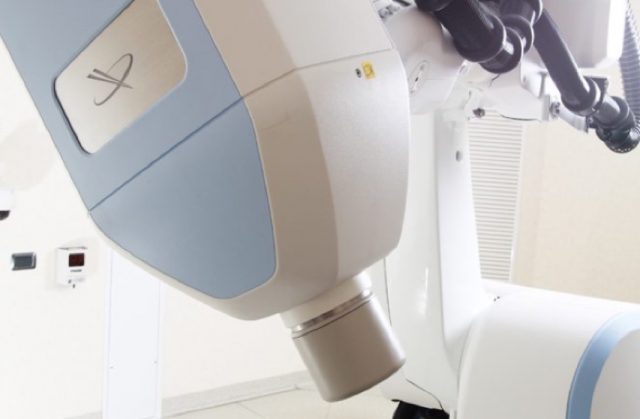AT CNAO, THE WORLD’S FIRST CHALLENGING CASE OF NATURAL PREGNANCY AFTER PELVIC HADRON THERAPY

The CNAO (National Centre for Oncological Hadron Therapy) in Pavia, Italy, celebrates the world’s first case of natural pregnancy after pelvic hadron therapy (use of protons and carbon ions to treat the pelvis) for chondrosarcoma of the sacrum.
This was a difficult and challenging case in which reproductive organs have been spared from the particle beam, thanks to a multidisciplinary collaboration at the highest level of specialisation. As a result, the young patient was able to undergo treatment in 2019, get pregnant in 2022 and today hold her own beautiful baby girl in her arms.
September 19th 2023. This extraordinary result achieved was made possible thanks to a task force of doctors from CNAO and the Policlinico San Matteo in Pavia, two centers of excellence that have joined their forces in a multidisciplinary collaboration. The protagonists are two radiation oncologists of the CNAO (Amelia Barcellini and Maria Rosaria Fiore), an anesthesiologist (Maria Paola Delmonte) and a gynecologist-oncologist (Chiara Cassani) of the Policlinico San Matteo. Worldwide, only six facilities can deliver proton and carbon ion hadrontherapy: CNAO is one of them and it’s the only one present in Italy.
Chondrosarcoma is a rare tumor that belongs to the sarcoma family, and its incidence is estimated between 0.5 and 0.8 per 100,000 inhabitants. The 20% of these chondrosarcomas affect the spine, sacrum, and coccyx. The first therapeutic choice is the surgical approach, when possible, but total resection is difficult either because of the advanced state of the disease, or because surgery can have important sequelae on the patient.
Moreover, this type of tumors is often highly radioresistant, therefore the hadrontherapy with protons and especially with carbon ions is particularly indicated in radioresistant tumors and is one of the most effective treatments, reducing the damage to surrounding healthy tissues and consequently the side effects. Finally, another significant advantage is that these particles are considered the most powerful ones for the treatment of these tumors.
The story of Angelica
Angelica’s case presented many difficulties and challenges. A radical dose, therefore high, of hadrontherapy (with carbon ions) would have been necessary to treat the tumor, but this dosage was’nt bearable by the adjacent organs, in particular the rectum, the uterus, and the ovaries. To overcome this major limitation, a silicone device, called ‘spacer‘ was surgically implanted, between the tumor to be irradiated and the organs at risk, in order to distance the rectum and uterus.
But, given the young age of Angelica and the need to preserve hormonal function, it became necessary to dislocate the ovaries during the spacer implantation, that is to relocate them anteriorly and “hang them” on the abdominal wall. Thanks to this complex surgical procedure, the organs were spared from the particle beam and thus from the high dose that would have damaged them. So, the hadrontherapy sessions started in 2019, Angelica became pregnant in 2022 and now she can hold her delightful little baby in her arms.
The therapeutic alliance between the patient and different specialists, belonging to different structures, was the real key to the success of Angelica’s story; an example of effective concreteness, and how such a multidisciplinary collaboration can lead to results that go even beyond expectations, in terms of innovation, trust and hope. Not only the team has found a remarkable solution to overcome the necessary radical dose, but it has also successfully achieved -for the first time worldwide -a natural pregnancy in this type of tumor.




 Dr Maria Rosaria Fiore is Referee for Spinal and pelvic pathology, ocular pathology.
Dr Maria Rosaria Fiore is Referee for Spinal and pelvic pathology, ocular pathology.
 The number of hadron therapy sessions necessary varies based on various factors, including the type of particle used, tumour type, size, and location. Typically, individuals require one session per day, five days a week, for 2 to 7 weeks.
The number of hadron therapy sessions necessary varies based on various factors, including the type of particle used, tumour type, size, and location. Typically, individuals require one session per day, five days a week, for 2 to 7 weeks.
